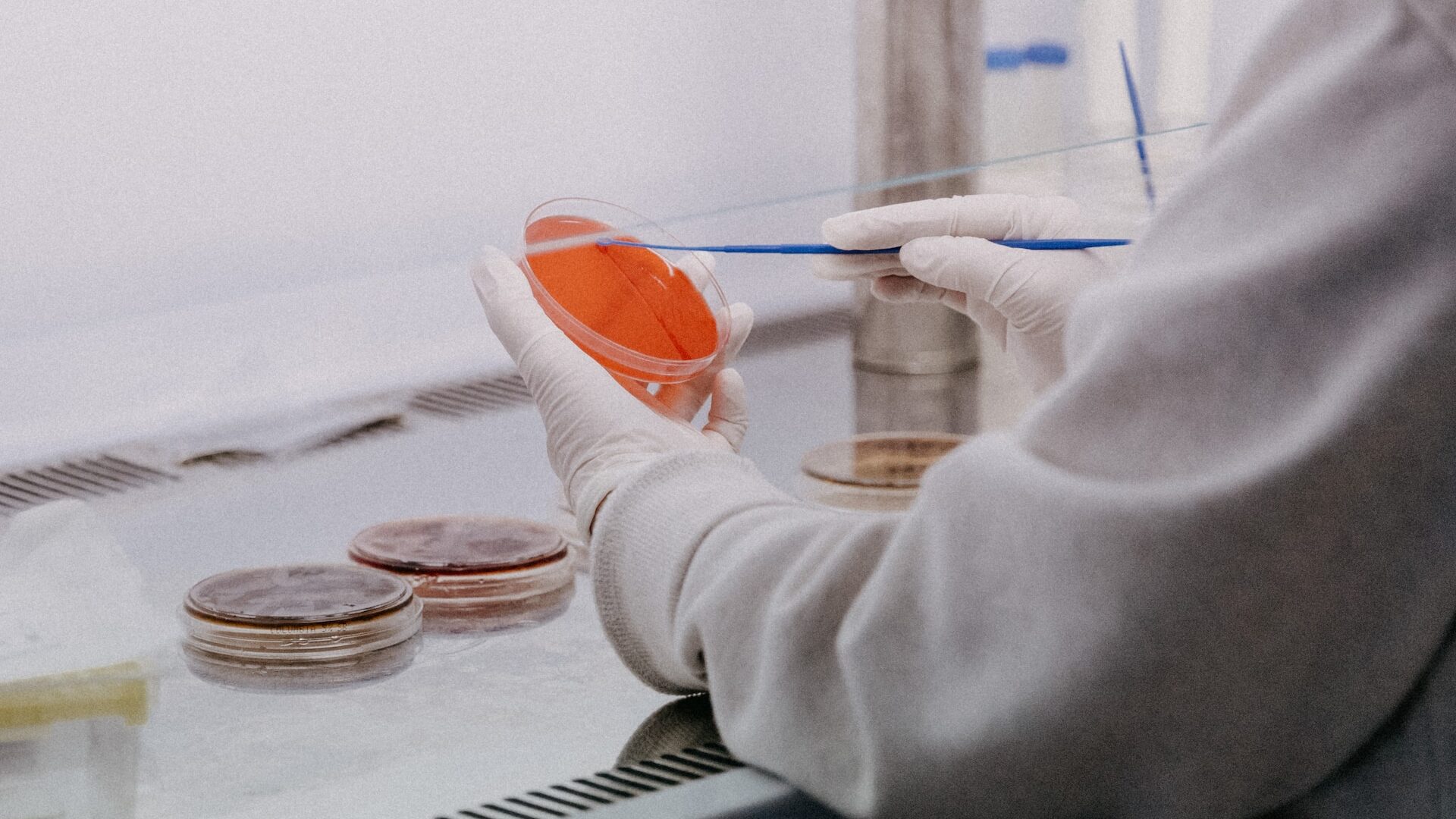Infectious diseases are conditions caused by microorganisms such as bacteria, fungi, viruses, or mites, but also toxic products, parasites, and biological agents. Illnesses can travel from person to person when we cough or sneeze, when we get close to each other, or even through bugs that carry the diseases.
Diseases caused by bad bacteria, which we call pathogens, can also spread this way. Sometimes, these bacteria get into our bodies without us noticing. Other times, they force their way in. Once inside, they multiply. This sets off alarms for our immune system to respond.
Anaplasmosis – Is one of the diseases caused by bacteria. Anaplasmosis is a systemic infectious disease transmitted by ticks and driven by the tiny, Gram-negative bacteria Anaplasma phagocytophilum, which are intracellular pathogenic microorganisms. Anaplasmosis affects humans and numerous animal species. In the early 1990s, people found out about a sickness called human granulocytic anaplasmosis.
It was first recognized in the U.S. This illness happens at the same time and places as a type of tick. These ticks are known as the Ixodes genus. Their home ranges include many zones. North America, Europe, and Asia are included. It's usually found in the northeastern and north-central regions of the United States. You can also see it in northern California.

Anaplasmosis is caused by the Gram-negative bacteria Anaplasma phagocytophilum![]() , transmitted by the genus Ixodes ticks. The bacterium enters a person's blood through a bite from an infected tick and spreads throughout the body. It is also transported with the blood to the bone marrow. Anaplasma phagocytophilum bacteria can be detected in the following:
, transmitted by the genus Ixodes ticks. The bacterium enters a person's blood through a bite from an infected tick and spreads throughout the body. It is also transported with the blood to the bone marrow. Anaplasma phagocytophilum bacteria can be detected in the following:
Anaplasma phagocytophilum infection is associated with a severe febrile reaction and immunosuppression. Leukopenia reduced white blood cell count, and thrombocytopenia belong to the blood picture abnormalities typical of Anaplasma phagocytophilum infection. The Anaplasma phagocytophilum bacterium can persist in the tick's body as it transforms from larva to nymph and adult form, allowing it to stay in the environment and infect subsequent hosts.
The carriers of these dangerous bacteria are rodents, deer, and some domestic animals, while the primary vector of pathogens is common ticks![]() . Birds are not a natural reservoir in the environment but can contribute to transmitting infected ticks to new areas. Infections occur entirely by accident in humans, horses, goats, and dogs.
. Birds are not a natural reservoir in the environment but can contribute to transmitting infected ticks to new areas. Infections occur entirely by accident in humans, horses, goats, and dogs.
Condition with anaplasmosis occurs through the bite of a tick infected with Anaplasma phagocytophilum. In contrast, the possibility of transmitting the bacteria through blood transfusion from asymptomatic donors is poorly documented. The incidence of anaplasmosis and the possibility of a more severe course of the disease increases significantly in the elderly population and those with weakened immune systems.

The course of anaplasmosis and severity of symptoms is uncharacteristic and variable. Most anaplasma infections are wholly asymptomatic or mild and self-limiting. In others, the disease begins abruptly, and some patients require treatment in the hospital. People with impaired immune systems and seniors are most at risk of developing the disease.
The incubation period of anaplasmosis ranges from 5 to 21 days![]() , and symptoms resolve in most patients after about a month. The condition can go from asymptomatic infection to very severe cases with a risk of death. Symptoms include:
, and symptoms resolve in most patients after about a month. The condition can go from asymptomatic infection to very severe cases with a risk of death. Symptoms include:

Headache – Severe headaches are typical symptoms of anaplasmosis. It may accompany symptoms such as general mood deterioration, weakness, and chills. Cold or flu-like symptoms may arise, including headaches which can worsen due to stress, poor sleep, low magnesium levels, excessive drinking or physical activity.
Muscle and joint pain – This type of discomfort often appears with a cold or flu. It usually pops up in certain spots, not the whole body. When our immune system fights the infection, it makes different things causing various pains. The body's defense system fights hard, making different things to tackle the sickness. In anaplasmosis, this causes lots of aches. These include body and muscle pain, as well as soreness in our joints.
Fever – With anaplasmosis, a high fever is usual and typical. It remains very high and might make you sweat more. Fever is a key defense method by the body. It starts to help the immune system when infections attack. To manage low to middle level fever, rest and drinking plenty of fluids work well. But for high fever, one needs medical treatment.
Nausea – This infection may also bring about nausea, a feeling that you might throw up. It's not a pain, but not a good feeling. It can be the only symptom or others might be there too. In the case of anaplasmosis, nausea is usually accompanied by other symptoms such as diarrhea and abdominal pain. Nausea and vomiting can be a physiological response of the body or suggest that a disease process is developing in the body.
Sweating – Increased sweating is a typical symptom of anaplasmosis and is usually accompanied by a high fever. Excessive sweating during each infection is a desirable phenomenon. It is one of the mechanisms of thermoregulation, which protects our body from overheating when the disease is accompanied by increased body temperature or high fever.
Cough – Another flu-like symptom in the course of anaplasmosis. Respiratory involvement is manifested by dry cough and atypical pneumonia. A cough accompanying a mild infection is not a cause for concern. Most often, it resolves spontaneously. However, medical advice is necessary if the disease has a severe course, there is a fever, weakness, or other disturbing symptoms. This is because flu-like symptoms can be confusing and make diagnosing anaplasmosis difficult.
Upper respiratory tract inflammation – Anaplasmosis can cause symptoms of pneumonia![]() . Pneumonia is inflammation of the lung parenchyma, causing a characteristic effusion. Its consequence is a reduction in the surface area of the lungs, the appearance of shortness of breath in the chest, accelerated breathing, or cyanosis, the symptom of which may be a bluish coloration of the skin, nails, or mucous membranes.
. Pneumonia is inflammation of the lung parenchyma, causing a characteristic effusion. Its consequence is a reduction in the surface area of the lungs, the appearance of shortness of breath in the chest, accelerated breathing, or cyanosis, the symptom of which may be a bluish coloration of the skin, nails, or mucous membranes.
Abdominal pain – Anaplasmosis can cause unusual gastrointestinal symptoms, such as nausea and abdominal pain. In addition to anaplasmosis, an ailment of this type is most often indicative of ongoing conditions in the body, such as stomach and duodenal ulcers, pancreatitis, liver and biliary tract disease, appendicitis, inflammatory and obstructive bowel disease, or kidney and urinary tract disease.
Diarrhea – In the course of anaplasmosis, diarrhea may also occur. Acute diarrhea as a result of infection produces characteristic gastrointestinal symptoms, while the consistency of the stool indicates what type of infection the person is struggling with. With bacterial diarrhea, there is a mushy stool consistency and pus, mucus, and, less often, blood. With diarrhea, one should also be wary of the risk of dehydration.
Enlargement of spleen, liver – In the course of the disease, splenomegaly and hepatomegaly![]() is usually observed. The first symptoms suggest splenic enlargement, including abdominal fullness, a sense of pressure in the rib area when doing basic activities, nausea, and pain. Depending on the physique, a normal liver is either not palpable on abdominal examination, or its lower edge may be discernible just below the rib arch. A condition in which the spleen and liver are enlarged is called hepatosplenomegaly. It occurs in the course of various diseases. Treatment usually makes the organs regain their average size.
is usually observed. The first symptoms suggest splenic enlargement, including abdominal fullness, a sense of pressure in the rib area when doing basic activities, nausea, and pain. Depending on the physique, a normal liver is either not palpable on abdominal examination, or its lower edge may be discernible just below the rib arch. A condition in which the spleen and liver are enlarged is called hepatosplenomegaly. It occurs in the course of various diseases. Treatment usually makes the organs regain their average size.
Rash – In the course of anaplasmosis, you may notice a rash. Imagine a rash with both small and big bumps similar to Lyme disease. Initially, it's just a red dot or bump, but, soon it expands. Often, it's ring-shaped with a vibrant center. It is erythema migrans![]() , also a characteristic symptom arising at the site of a tick bite in the course of Lyme disease. This red spot is a unique sign that helps identify the ailment, so remember this fact.
, also a characteristic symptom arising at the site of a tick bite in the course of Lyme disease. This red spot is a unique sign that helps identify the ailment, so remember this fact.
Changes in blood count – A drop in most counts on a blood test can hint at several illnesses, Anaplasmosis included. Detailed studies on your blood can provide tons of information, assisting in accurate diagnosis. Changes mainly affect the white blood cell system. In bacterial diseases, there is an increased number of white blood cells with an increase in the percentage of granulocytic series cells.
Disturbance of consciousness – Where anaplasmosis has involved the nervous system, disorders of consciousness may occur. Headaches and neck stiffness may accompany it. In rare, severe cases, the disease can cause encephalitis. Encephalitis is a condition in which inflammation involves the brain parenchyma. It is one of the inflammatory conditions of the central nervous system. Encephalitis can lead to irreversible damage to this organ and, in extreme cases, to death. When you notice alarming symptoms, seek medical attention immediately.

Anaplasmosis can be suspected based on clinical symptoms, especially if a tick has bitten the suspected person. Anaplasmosis is a disease that most often coexists with other tick-borne diseases, (Lyme disease or babesiosis) so diagnosis should be made by highly specialized medical personnel. In diagnosing the disease, blood morphology is mainly used, in which the following statistics are essential:

Leukocyte count – Among leukocytes, agranulocytes, lymphocytes, and monocytes are distinguished, as well as granulocytes. Leukocytes are an essential element of the immune system. The high count of these, or a drop below the usual standard, points to active health issues, like diseases and infections. These fighters against germs and viruses play a key role in our blood. A lower than average amount of leukocytes in blood![]() can flag anaplasmosis. This low count condition has a special name, leukopenia.
can flag anaplasmosis. This low count condition has a special name, leukopenia.
Platelet count – Platelets, or thrombocytes, are the essential morphotic element next to leukocytes and erythrocytes. The most critical role of platelets is to maintain homeostasis of the human body; in addition, they play crucial functions in inflammation, activation of the inflammatory response, and even in the progression of cancer. In the case of anaplasmosis, a decrease in the number of platelets![]() is observed. Low platelets are manifested by bleeding gums, petechiae, increased tendency to bruising, nosebleeds, or increased and prolonged menstruation.
is observed. Low platelets are manifested by bleeding gums, petechiae, increased tendency to bruising, nosebleeds, or increased and prolonged menstruation.
Bilirubin level – Total bilirubin is a bile pigment formed by the breakdown of heme, the main component of hemoglobin. Many diseases can be diagnosed with the help of a test to determine their level in the blood. In anaplasmosis, there is an increase in bilirubin. A total bilirubin level that is too high is always an alarming symptom that should not be ignored. However, it is essential to remember that high bilirubin levels![]() are diagnosed in pregnant women, where it is an ordinary condition that does not require medical intervention.
are diagnosed in pregnant women, where it is an ordinary condition that does not require medical intervention.
CRP protein level – The CRP protein is created in the liver and sent into our bloodstream. It's a good signal for spotting quick-starting inflammation from many sources. When there's an infection or damage to body tissue, the amount of this protein shoots up. This swift increase makes it reliable for keeping an eye on inflammation. In anaplasmosis it causes a spike in CRP protein levels. Often, before we see a jump in the levels of CRP in our blood, there are early signs like pain or a high fever. Even different clinical symptoms can show up first. When the body's fighting inflammation, CRP levels![]() can hike up by the thousands.
can hike up by the thousands.
Creatinine levels – Creatinine originates in the liver. It's then transported to our skeletal muscles, transforming into creatine phosphate. Primarily, muscle and tendons house creatinine, a byproduct of creatine. This metabolite is used in muscle as an energy carrier. Determination of it is considered a biochemical marker for monitoring kidney function. It is also used in the diagnosis of metabolic disorders. In anaplasmosis, increased levels of creatinine![]() are observed.
are observed.
Changes in enzyme activity – Various enzymes are looked at in suspected anaplasmosis. Essentially, alkaline phosphatase gets checked. High levels typically suggest infection or liver issues. Sometimes, it's linked to problems with bile flow in the liver or bile ducts. Not to mention, body inflammation can impact cholesterol. It can boost LDL cholesterol, while decreasing HDL cholesterol. In addition to it, alanine aminotransferase and aspartate aminotransferase are essential indicators of anaplasmosis. Liver tests are enzymes by which it can be determined what condition the liver is in and whether it is working correctly.
Presence of DNA of the microorganism – Another laboratory criterion for diagnosing anaplasmosis is the presence of a specific DNA sequence of the organism in the blood detected by PCR. Less commonly, it is also possible to culture the bacteria from a blood sample, and distinguished among other functional tests is the analysis of a peripheral blood smear, in which the presence of intracellular inclusions in the form of morulae in granulocytes can be observed.

If you suspect anaplasmosis, you belong to a doctor. Symptomatic treatment to relieve fever can be administered on its own ad hoc basis. A complete cure of anaplasmosis is possible. The clinical signs of the disease usually resolve spontaneously within a few days. Only in rare cases does the condition become severe and develop complications. Treatment of anaplasmosis mainly uses antibiotic therapy![]() .
.
Antibiotic therapy – It is essential to start pharmacotherapy as soon as possible; otherwise, it may prove ineffective. Antibiotics such as d*********e are used in the treatment. D*********e is an antibiotic. The drug belong to the tetracycline group, which is used to treat conditions caused by bacteria sensitive to this substance. In some cases, that is, in children or pregnant women, rifampicin is the recommended drug. Symptomatic treatment, such as analgesics and antipyretics, is also used. Antibiotics are highly effective in treating anaplasmosis.
If the anaplasmosis is mild and adequately treated with an antibiotic, it usually requires only a sparing lifestyle until recovery comes. In rare cases of severe complications, a comeback to total health may require prolonged rehabilitation.

Patients who receive early outpatient treatment with medication recover quickly. However, anaplasmosis, although mostly asymptomatic, can also lead to death if not diagnosed and treated in time or correctly. The most significant risk is in seniors and those with autoimmune or immunocompromised diseases![]() . It is worth remembering that untreated anaplasmosis can cause various complications, such as:
. It is worth remembering that untreated anaplasmosis can cause various complications, such as:

Respiratory failure – Respiratory failure is a common complication of many diseases. In its course, the functions of the respiratory system are disrupted so that the body cannot supply tissues and organs with oxygen or excrete an adequate amount of carbon dioxide from the body. It causes respiratory acidosis, which in its exacerbated form is life-threatening. The most typical symptom of respiratory failure is shortness of breath, which can be either resting or exercise-induced. An essential part of the management is oxygen treatment, which aims to improve blood oxygenation.
Renal failure – This condition is a state of impairment of normal renal function that cannot be compensated for by the body's compensatory mechanisms. Because of the ongoing dynamics of change in the kidneys, the acute and chronic states of failure are distinguished. Even several years may pass without symptoms, and alarming symptoms may appear only after the loss of half of the active parenchyma of the organ. The basis of treatment is to eliminate or slow down the process of kidney damage and improve the quality of life with the disease.
Heart failure – This condition means the heart isn't doing its main job right. It’s not pumping enough blood within a certain time to the body's tissues and organs. It results in a disruption of their metabolism. Where lesions are concentrated within the left ventricle, respiratory symptoms are typical. Patients may have shortness of breath, with breathing problems increasing during movement and appearing with little activity and at rest. The mainstay of treatment for heart failure is to remove the underlying cause.
Septic shock – The state is the most severe stage of sepsis, a generalized inflammatory reaction to bacterial infection. The immediate cause of septic shock is the exhaustion of the body's compensatory capacity, which cannot supply adequate blood and oxygen to the internal organs. It results in hypoxia, organ failure, and, in many cases, death. First aid for septic shock consists mainly of calling an ambulance immediately. This is because the patient must be taken directly to a hospital ward.
Myocarditis – Myocarditis is a severe disease that causes damage to the heart organ due to inflammation. When this problem happens, the swelling impacts the heart's muscle cells, vessels, and surrounding tissue. This illness shows common heart-related signs like discomfort in the chest and uneven or swift heartbeats. The further delayed a right diagnosis and start of treatment, the more severe the patient's outlook becomes. Treatment of myocarditis depends on the cause.

Myositis – Polymyositis is an idiopathic rheumatic disease involving the development of inflammation in various muscle groups. Myositis most often affects the striated muscles of the shoulder and hip girdle and the spinal muscles, although there are cases involving the heart or respiratory muscles. Symptoms of idiopathic myositis usually develop gradually over many weeks, but much less often, their onset is acute. Handling polymyositis is a tricky, long-term task. However, sometimes you can fully stop the symptoms. The first step usually involves high levels of corticosteroids, commonly prednisone. You can take these orally or through an IV.
Disseminated intravascular coagulation – DIC is a life-threatening syndrome secondary to many different clinical conditions. It involves generalized activation of the blood clotting process, which can cause shock, organ failure, and death. Generalized clotting causes excessive consumption of clotting factors, which causes bleeding that the body has nothing to stop. The symptoms of DIC depend on the severity of the course. The main symptom is various types of bleeding. Treatment of DIC depends on the underlying disease. Treatment of acute DIC is carried out only in a hospital setting.
Facial nerve palsy – It is a spontaneous, sudden facial paralysis. The condition is caused by damage to the facial nerve fibers. A facial deformity can be seen, namely a lowered corner of the mouth and difficulty closing the eyelid. The patient also has a problem with clear speech, and the ability to taste is reduced. Treatment involves drug therapy in the character of oral intake of glucocorticosteroids. In addition to it, home treatment in the form of physical therapy can also be used.
Cryptococcosis – Cryptococcosis is a type of mycosis fungoides. It is a respiratory ailment of an acute or subacute nature. This microorganism is present worldwide and mainly attacks the central nervous system, skin, lungs, and subcutaneous tissue. When the Cryptococcus neoformans fungus finds its way into your body, it primarily inhabits the lungs. For immunocompromised people, the disease can take various courses. Cryptococcosis treatment should occur in a hospital setting, where intravenous antibiotics can be administered.
Disseminated candidiasis – Systemic candidiasis is a mycosis of various internal organs caused by fungi of the genus Candida spp. Signs of the condition depend on the type of organ involved. One can distinguish between cardiovascular candidiasis, urinary candidiasis, respiratory candidiasis, central nervous system candidiasis, candidiasis of the joints, bones, and bone marrow, and candidiasis of different organs. Disseminated candidiasis simultaneously occupies multiple organs. When picking a treatment for widespread yeast infection, not just the nature of the illness is thought of. The person's general health, their risks, and the type of yeast are also kept in mind.
Disseminated herpes virus infection – The herpes simplex virus is widespread among all continents. The viruses enter the human body through mucous membranes or damaged skin and cause a primary infection. The characteristic symptom of HSV infection is the presence of vesicular-like skin lesions. Treatment of herpes consists of antiviral drugs, which reduce the severity of symptoms. But it is crucial, that the treatment not eliminate the virus from the body. For those with recurrent disease, antiviral drugs are used. It is best to start administration before the first heraldic symptoms appear.

The recently increasing incidence of tick-borne diseases is becoming a severe epidemiological problem. It is necessary to raise public awareness and the competence of doctors of many specialties to counteract the spread of dangerous pathogens jointly. Prevention of anaplasmosis is based on the prevention of tick bites. Preventive measures include:
Try not to stay in areas where ticks are often found, they're high-risk. But, protection from ticks mainly includes the right clothing for woodland or dense grassland trips. That involves wearing shirts with long sleeves, long pants, socks, and full shoes. Covering your head and neck can be helpful too. Using repellents, especially those with tick repelling ingredients, is also a good plan. It's best to spray them on clothes and skin that's showing, but not on your face.
When you return from places where ticks are common, it is essential to take a shower. Then, thoroughly check your skin, especially parts like your underarms, behind the ears, and folds in your skin. Always bring a tool for tick removal. This lets you get rid of any tick fast, no matter where you are. Also have a gauze pad ready to clean your skin.

If you discover a feeding tick on your skin, it is best to act quickly. The longer the arachnid can feed, the greater the likelihood of pathogen infestation. Remove the tick only mechanically with narrow forceps, which should be grasped as close to the skin as possible. Pull the tick straight out using a steady pull. Doing this correctly ensures that the procedure works.
Once you've gotten it out, clean the area with an anti-germ cleaner. Remember to also wash your hands properly. If you can't reach where the tick bit you, don't hesitate to get someone else to assist. If the red spot from the bite fades away or gets bigger, it may be a good idea to see a doctor. The same applies if the place the tick bit you becomes swollen, feels warm, aches, or pulsates.
Remember that a tick can pass from a dog or cat to a human. In particular, when we sleep with animals in bed. Children are also exposed to them. Tick repellents for pets can be used. It is perfect practice to watch your dog after long walks, especially where it has been trips through clearings, forests, or tall grasses. After each long walk, check the dog's skin. If you see a tick on the dog, get it off right away. Using special tweezers works best.
Ticks can be different shades of brown, from dark to light. Sometimes, you might find female ticks with bits of red. If there are complications after removing the tick, that is, any part of the tick that remains in the corpse's skin, you have to go to the veterinarian immediately or if you do not know how to remove the tick from the dog. After removing the tick, the bite site should be disinfected, and then observe if the pet shows signs of tick-borne diseases.

Ticks are found in various places around the world. Ticks like to hang out at forest borders as well as openings in city parks or gardens. They're tiny, yet can be really harmful to people. This is because they can carry a lot of germs and spread many diseases. The most frequent disease they spread is Lyme disease. Besides anaplasmosis, ticks are responsible for these other conditions:
Lyme disease – A spiral germ named Borrelia burgdorferi causes a tick-borne disease known as Lyme disease. Symptoms can vary. Some might look like other health problems. A common sign is a red area around where the tick bit, growing outwards. Not all Lyme disease patients get redness after a tick bite, so it's hard to diagnose. Fatigue, impaired balance, and headaches are also common mild, early symptoms. If ignored, this tick-related disease can lead to more health issues.
Babesiosis – Babesiosis is an uncommon disease passed to humans by ticks. The disease is spawned by tiny organisms, from the Babesia species, which get into our blood through tick bites. These microscopic protozoans assault our red blood cells, multiply within, and cause them to burst. How babesiosis affects a person and the symptoms they exhibit depend on their immune system. Healthy, young, and fully immunocompetent people often pass Babesia infection asymptomatically, or symptoms of babesiosis will be limited to flu-like signs.
Tick-borne encephalitis – This affliction is a hazardous disease for the human body. The characteristic symptoms of this disease are headaches, high fever, and joint and muscle pain. In a word, the disease symptoms resemble the flu, so it is difficult to associate these symptoms with tick-borne encephalitis. In the next phase, there is vomiting, diarrhea. But in severe cases, there can be coma and serious complications. Inactivated vaccines against tick-borne encephalitis are available.

Tick-borne infections of a pregnant woman can potentially affect the development of the fetus![]() . It is most dangerous when it occurs during the first trimester of pregnancy. Finding a tick by a pregnant woman can cause anxiety, but it is worth remembering that not each tick is a carrier. Even a small chance of a tick bite should be taken seriously because of its risks. Quickly tell a doctor if you think you've been bitten.
. It is most dangerous when it occurs during the first trimester of pregnancy. Finding a tick by a pregnant woman can cause anxiety, but it is worth remembering that not each tick is a carrier. Even a small chance of a tick bite should be taken seriously because of its risks. Quickly tell a doctor if you think you've been bitten.
While expecting a child, Anaplasmosis can harm both mother and baby. Doctors use different types of treatments. However, the popular antibiotic therapy with d*********e may not be advisable for pregnant women because d*********e can affect the development of the fetus' musculoskeletal system, so different types of drugs are used, which are selected by a specialist.
Anaplasmosis, a bacterial disease, is transmitted through tick bites. The culprit is a tiny bacteria named Anaplasma phagocytophilum, which can affect humans and animals. In the early '90s, a related disease called human granulocytic anaplasmosis was identified in the U.S. This disease coincides with the presence of Ixodes ticks, found in many areas. After a tick bite, the bacteria enter your blood, spreading all over and reaching your bone marrow. Anaplasmosis can vary wildly in severity.
Some people show no symptoms, others experience a sudden onset of symptoms, needing hospital care. Typically, blood tests are used in diagnosing the disease. Treatment may include fever relievers. Don't worry, a cure is possible. Usually, symptoms go away within a few days, but in rare cases, complications may arise. The primary treatment involves antibiotics.